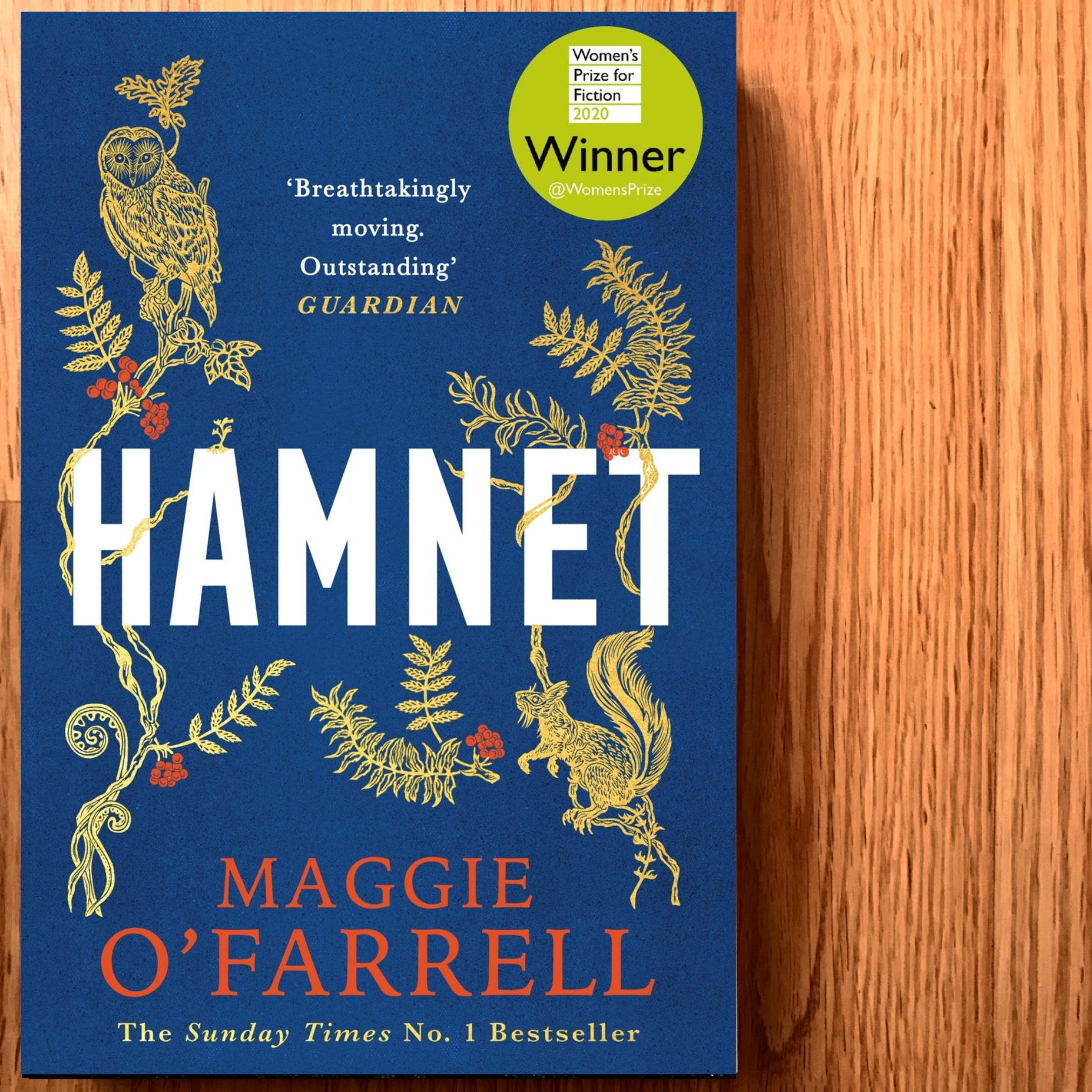By Larissa Page
Content warning: child death, parental abuse
Hamnet was William Shakespeare’s son who died in 1596 at the age of 11 from “pestilence” or the bubonic plague. Approximately four years after his death, Shakespeare wrote his most enigmatic play: Hamlet. Based on records that indicate the names Hamlet and Hamnet were interchangeable at the time of Hamnet’s life and Shakespeare writing Hamlet, Maggie O’Farrell formulates a story of marriage, love, parenthood, and mostly, of grief.
Hamnet takes place in two parts. The first jumps back and forth between the past when Agnes and William were growing up, to their meeting, initial romance, early marriage, the birth of their children, and William’s moving to London to eventually become the man we know him today, and the present when Hamnet’s twin sister Judith comes down with what is determined to be pestilence/bubonic plague. The parts committed to retelling the past are quick-moving, jumping ahead years between their parts, whereas the present-day 1596 moves more slowly, spanning only about 24-48 hours. This was a super interesting dynamic that I really enjoyed.
Part two of Hamnet takes place only in the novel’s present over the four or so years after Hamnet’s death. It is almost solely an exploration of grief and what that means to different people and how they may deal with it. The loss of a child for his mother versus for his father versus for his sisters. Each character grieves in completely different ways, and while the story focuses mostly on Agnes, his mother, we see the grief of each person reflected differently.
What surprised me most about this novel was how much I liked Agnes. I know very little, and I think most people, in general, know very little about William Shakespeare’s wife. From what we do know, though, O’Farrell constricted a fully formed, determined, strong, and incredible female character. Agnes’s role as a mother and a wife felt equal to her tenacity to hold onto her sense of self. We only see that tenacity falter when she is faced with the grief of losing a child, which felt so real and agonizing.
Additionally, the relationship between Judith and Hamnet, twins, is not given as much spotlight as the relationship between Agnes and William or Agnes and Hamnet, but the love and loss and sacrifice is felt as much there as it is in other parts of the book. This is a compliment to O’Farrell, who masterfully wrote historical fiction that is more about the relationships and emotions and character development than it is about the historical events the novel is based on.
I was surprised by Hamnet. I did not expect to become so invested in the characters and their grief, I did not expect a back story of a romance and a marriage that was very reflective of real-world relationships, and I did not expect to be given such a strong female character and such loving bonds. I can be picky about my historical fiction, but I feel that Hamnet is so much more than that. It’s an exploration of unique relationships between husband and wife, mother and child, sister and brother, mother-in-law and daughter-in-law, as well as how the death of a child can affect each and every one of those people in a different way.

